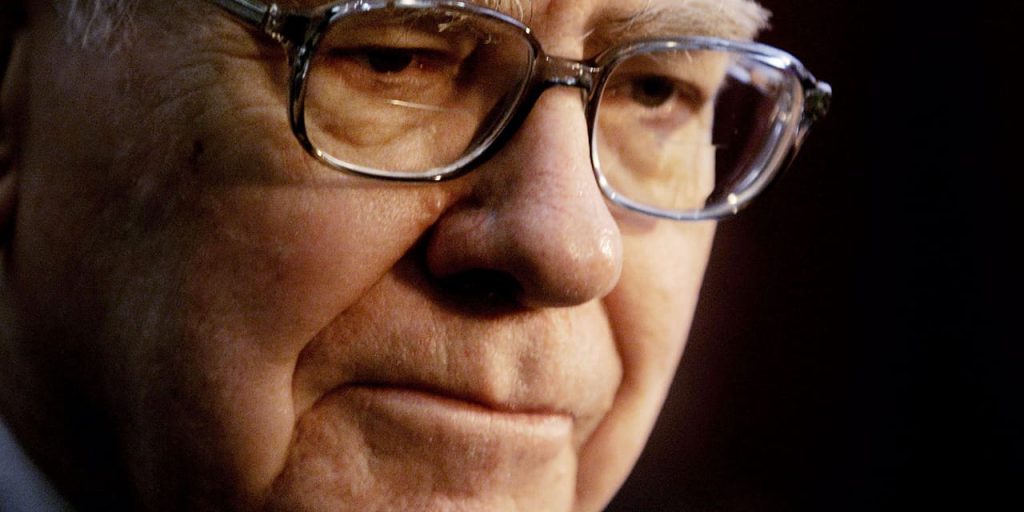It seems like everyone is saying the bond market looks attractive now, but one notable investor isn’t on board.
Berkshire Hathaway
(ticker: BRK.A, BKR.B) CEO Warren Buffett, 93 years old, has long favored stocks over bonds. That is a smart view given the historical outperformance of stocks, and the surge in rates since March 2022 hasn’t changed his view.
Just take a look at the enormous Berkshire investment portfolio that Buffett oversees.
At the end of September, Berkshire held about $340 billion of stocks; $157 billion of cash, mostly in U.S. Treasury bills maturing in less than a year; and just $22 billion of bonds. That is according to Berkshire’s quarterly 10-Q filing with the Securities and Exchange Commission, released on Saturday in conjunction with its third-quarter earnings.
And that bond portfolio is largely cash-like. About 75%, or $17 billion, matures in the next 12 months. Just 1% of the entire Berkshire portfolio is invested in bonds with a maturity of longer than one year. Berkshire’s bond portfolio is down about $3 billion since the start of 2023.
Berkshire’s investment portfolio has gotten even more equity-heavy with time. When 10-year Treasury debt yielded less than 1% in 2020, Buffett marveled at the willingness of bond investors to accept that paltry rate. Ten-year Treasury debt now yields about 4.6%, but Buffett is still holding back.
A big chunk of the investment portfolio backs Berkshire’s huge property and casualty insurance operations. Insurers invest the premium income they get from customers and then use the proceeds to help pay claims, often years later. Most P&C insurers invest the bulk of their assets in bonds because regulators want to ensure that they can pay claims, and stocks are riskier than bonds.
Compare Berkshire to
Chubb
(CB), one of the largest P&C insurers. Chubb ended the third quarter with about $100 billion in bonds, $17 billion in equities (mostly private), and $5 billion in cash. The Chubb portfolio is typical of big public P&C companies.
But Berkshire takes what investors call a barbell approach. It has a big slug of riskier assets, in the form of stocks, nearly half of that
Apple
(AAPL), and a large amount of low-risk assets, mainly cash. The cash amounts to a substitute for bonds.
Berkshire can invest more aggressively than the rest of the P&C industry because it has so much more capital than other big insurers. As a result, insurance regulators give Berkshire considerable investment leeway. Berkshire has about $300 billion of capital, about 25% of the total net worth of the entire U.S. P&C insurance industry.
Berkshire Vice Chairman Charlie Munger pointed out at the company’s annual meeting in May that Berkshire has about four times more capital relative to the amount of premiums it collects each year than the rest of the industry.
Asked at the meeting about an insurance contract with
American International Group
(AIG) in which Berkshire took a $10 billion premium for insuring against $20 billion of long-term liabilities, Buffett said: “And when we take that $10 billion, we don’t agree to put it in 5-year bonds and 10-year bonds. We don’t even think that way.”
Buffett held a lot of cash when short rates were at zero in 2020 and 2021, taking that financial pain because he felt bond yields were terrible. He wouldn’t follow the example of banks like
Bank of America
(BAC) that invested heavily in bonds when yields were at historic lows.
Bank of America and some other banks now have huge paper losses because bond prices fall as yields rise. And Buffett is being vindicated as short rates have surged to over 5%, giving Berkshire ample returns on its cash.
The big news will come if Buffett ever decides to redeploy a chunk of the cash into bonds. Wall Street is still waiting for that, but it might take appreciably higher yields to entice Buffett.
Write to Andrew Bary at andrew.bary@barrons.com
Read the full article here




